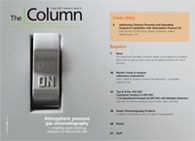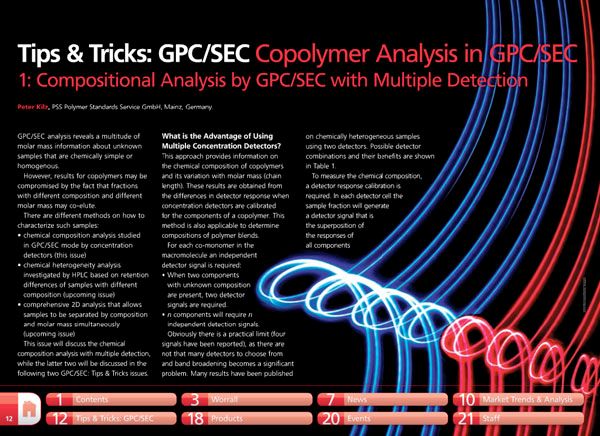Tips & Tricks: GPC/SEC Copolymer Analysis in GPC/SEC 1: Compositional Analysis by GPC/SEC with Multiple Detection
GPC/SEC analysis reveals a multitude of molar mass information about unknown samples that are chemically simple or homogenous.
GPC/SEC analysis reveals a multitude of molar mass information about unknown samples that are chemically simple or homogenous.
However, results for copolymers may be compromised by the fact that fractions with different composition and different molar mass may co-elute.
There are different methods on how to characterize such samples:
• chemical composition analysis studied in GPC/SEC mode by concentration detectors (this issue)
• chemical heterogeneity analysis investigated by HPLC based on retention differences of samples with different composition (upcoming issue)
• comprehensive 2D analysis that allows samples to be separated by composition and molar mass simultaneously (upcoming issue)
This issue will discuss the chemical composition analysis with multiple detection, while the latter two will be discussed in the following two GPC/SEC: Tips & Tricks issues.

Removing Double-Stranded RNA Impurities Using Chromatography
April 8th 2025Researchers from Agency for Science, Technology and Research in Singapore recently published a review article exploring how chromatography can be used to remove double-stranded RNA impurities during mRNA therapeutics production.
The Effect of Time and Tide On PFAS Concentrations in Estuaries
April 8th 2025Oliver Jones and Navneet Singh from RMIT University, Melbourne, Australia discuss a recent study they conducted to investigate the relationship between tidal cycles and PFAS concentrations in estuarine systems, and offer practical advice on the sample preparation and LC–MS/MS techniques they used to achieve the best results.












